Top 15 Best Things You Must Do in Chau Doc
When traveling to Chau Doc, you must be wondering what interesting attractions there are to visit right? Of course, we won't keep you waiting. Let's explore with Vietnam Budget Carrental the Top 15 Best Things You Must Do in Chau Doc that will allow you to feel the peaceful and modest yet intimate beauty.
Overview of Chau Doc, An Giang

Chau Doc is currently a city under An Giang province, located on the banks of the Hau River, about 210km west of Ho Chi Minh City. With an area of around 104.7 km2 and a population of just over 110,000 people, life here is always bustling and crowded as it regularly attracts tourists.
Coming to Chau Doc, you will enjoy the vibrant atmosphere of the markets, the tranquility yet liveliness of the green rice fields, clear rivers and many types of fruits and seafood characteristic of the West.
When is the best time for you to visit Chau Doc?
To make your trip to Chau Doc more enjoyable, it's important to choose the right time to visit. Most travelers opt for a visit to Chau Doc from August to November to experience the unique floating season of the Mekong Delta and discover the enjoyable aspects of Chau Doc.
However, since prices are relatively high during this time, you should also consider your travel budget. Another option is to visit Chau Doc in late November to early December when the rice fields turn golden.
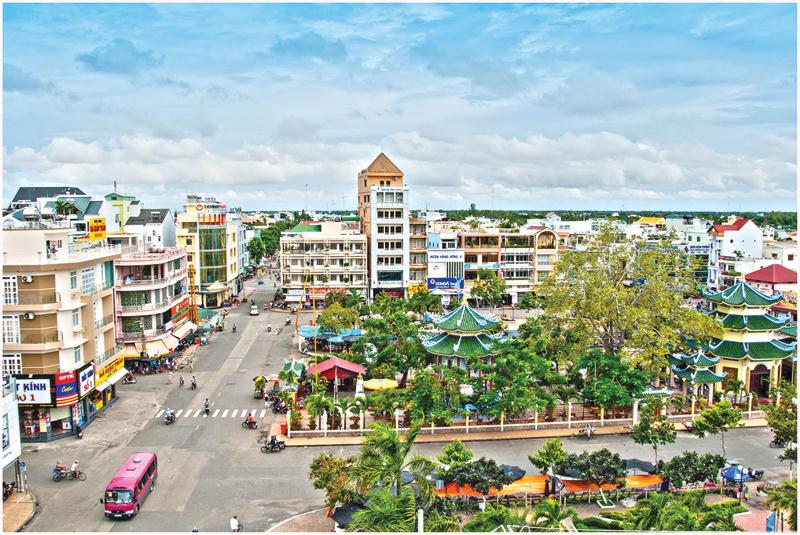
Particularly, the peak tourist season in Chau Doc, favored by many visitors, is from January to April of the lunar calendar. In early spring, many people want to visit the Ba Chua Xu Temple to pray for good luck and peace. From the 23rd to the 27th of April in the lunar calendar, the Ba Chua Xu Mountain Festival takes place, attracting a lot of tourists.
How do you get to Chau Doc?
From Ho Chi Minh City to Chau Doc is around 245 kilometers and 120 kilometers from Can Tho.
- From Ho Chi Minh City: a bus ticket to Chau Doc or Long Xuyen may be purchased at the Mien Tay bus station. It will take approximately 5-6 hours to drive. Some best bus brands in Vietnam such as Phuong Trang and Thanh Buoi are suggested. One-way tickets cost between 150,000 and 250,000 VND.
- From Can Tho: you can take a local bus from Can Tho station to Chau Doc. The travel takes roughly 3 hours, and the ticket costs between 100,000 and 200,000 VND one way.
- From Danang or Hanoi: You can book a flight from Hanoi or Danang to Tra Noc Airport (in Can Tho) with Vietnam Airlines or Vietjet Air. When you arrive in Can Tho, you can take a local bus or a private transfer for the roughly 3-hour drive to Chau Doc.
Top 15 Best Things You Must Do in Chau Doc
1. Ba Chua Xu Temple
The Shrine of Lady Xu, also known as Ba Chua Xu Temple, has a long history, dating back to 1870, and has undergone several renovations. By the year 2009, this structure was considered the largest temple-shrine in Vietnam.
This renowned shrine in Chau Doc is designed and decorated in the style of Indian art, specifically following the layout of the word "Quốc" (meaning "country" in Vietnamese) with tower-shaped structures. When viewed from afar, the construction resembles a blooming lotus flower with its green tiled roof and a three-tiered, three-floor shape.
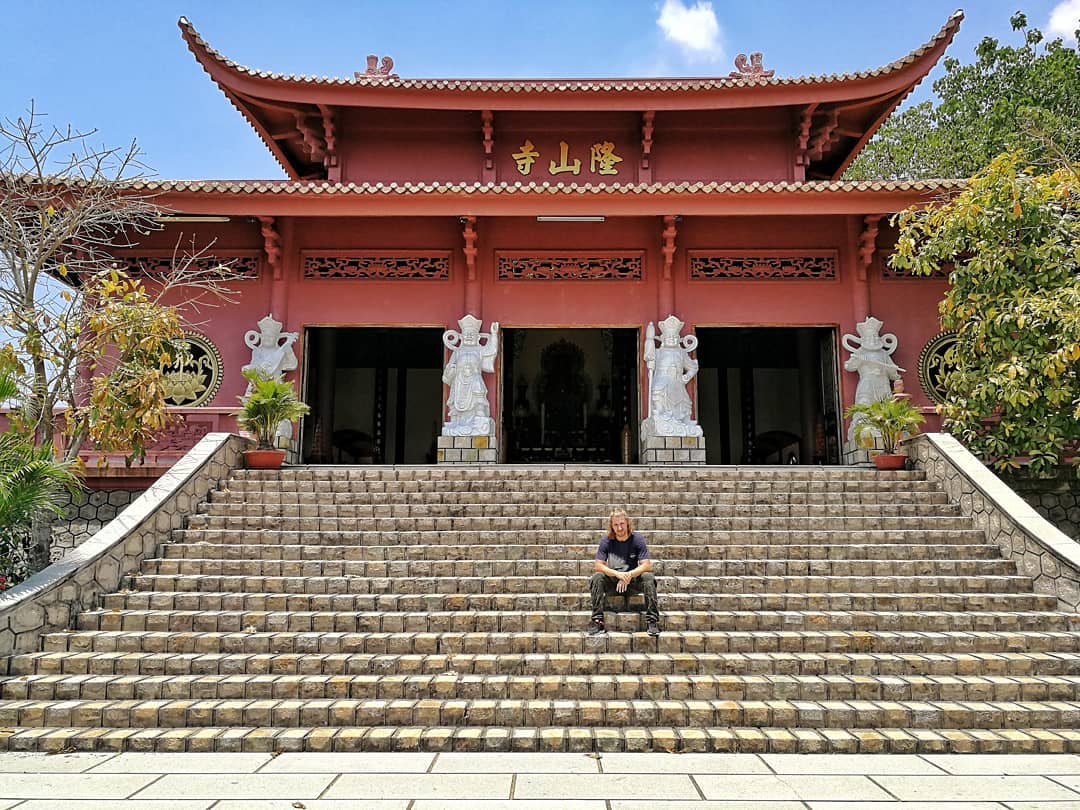
Not only does the shrine possess grandeur and magnificence in its appearance, but the decorative details, patterns, and sculptures within Ba Chua Xu Temple are intricately and exquisitely crafted, bearing a strong influence of Indian artistry.
Most notably, the statue of Lady Xu is placed in the central area of the main hall, with the altar of the Council in front, and the altars of Predecessors and Descendants on either side. On the left side, there is an altar for a figure and a Linga made of stone, approximately 1.2 meters tall. Additionally, there are carved lintels and transoms on all door wings, adorned with intricate sculptures, and in some areas, gilded with radiant gold leaf.
2. Phuoc Dien ( Hang ) Pagoda
Phuoc Dien Tu is a famous ancient pagoda, standing firmly on the slopes of Sam Mountain, surrounded by lush trees. The nearly 200-year-old structure is listed among the oldest pagodas in An Giang. Nestled against the mountainside, Phuoc Dien Tu has an airy space with many beautiful views. The ancient temple is also called Hang Pagoda by the locals and Buddhist followers.
Visitors to Hang Pagoda can feel the solemnity emanating from the architecture and sturdy location of this spiritual destination. Additionally, the picturesque scenery and peaceful ambience, fresh atmosphere also leave an impression on all who visit.
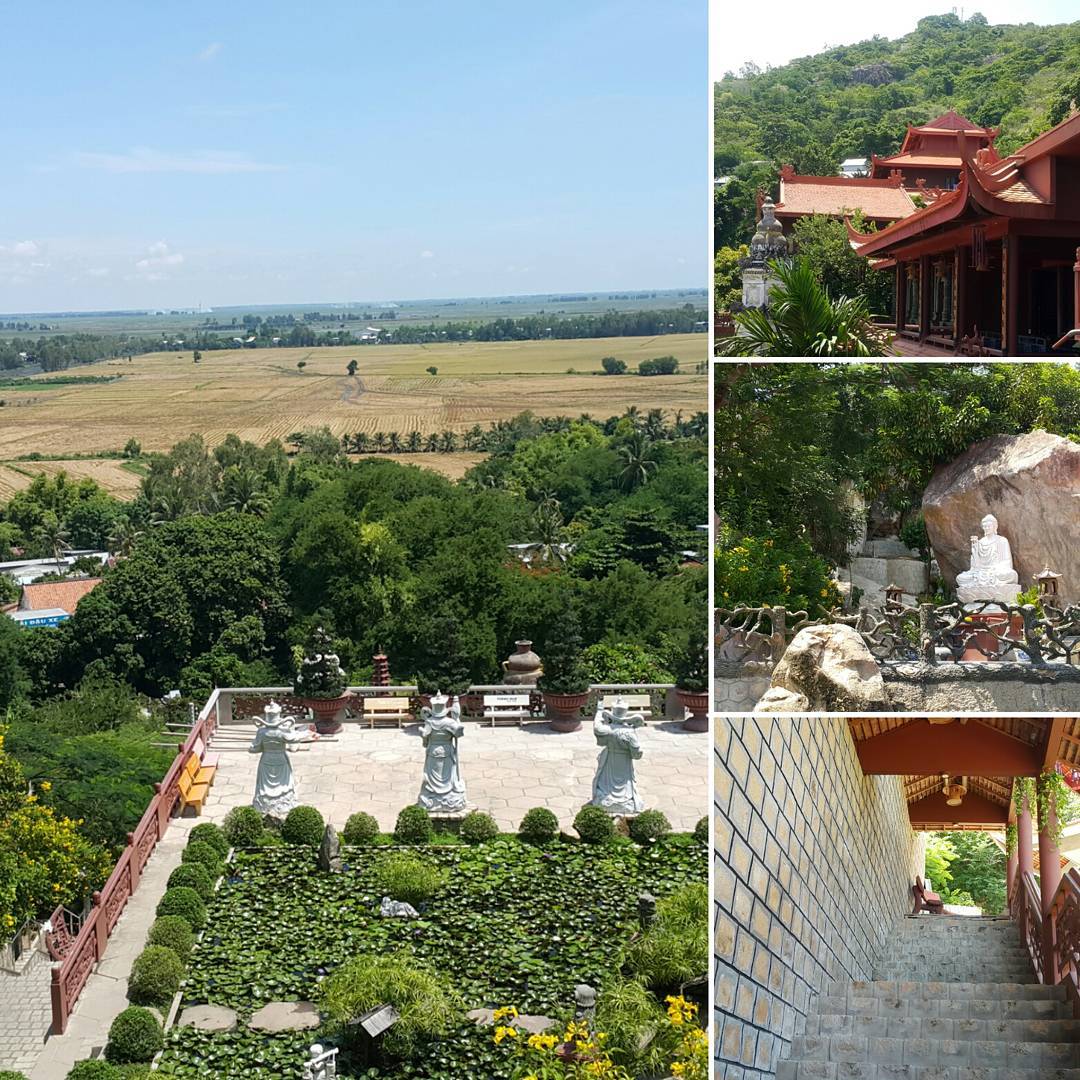
Most of the structures in the ancient monastery are meticulously maintained and solidly built yet subtle, from the main hall, Venerable Thich Hue Thien stupa to Mrs. Tho stupa, etc. All form a symmetrical architecture harmoniously blended with nature. A unique highlight of the ancient monastery is the view facing the vast rice fields in the distance.
The main hall has many horizontal lacquered boards, parallel sentences along with intricately carved Buddha statues, harmoniously arranged. The main color in the hall is dark brown, further highlighting the pure, quiet, sometimes desolate space.
3. Sam Mountain
The tourist destinations in Chau Doc not only include temples, shrines, and sacred tombs but also boast a famous landmark—Mount Sam. This is the location of many revered religious structures. Sam Mountain is also known as Vinh Te Son or by another name, Ngoc Lanh Son. With a height of 284 meters and a circumference of 5,200 meters, this mystical mountain is situated within the city of Chau Doc, An Giang province.
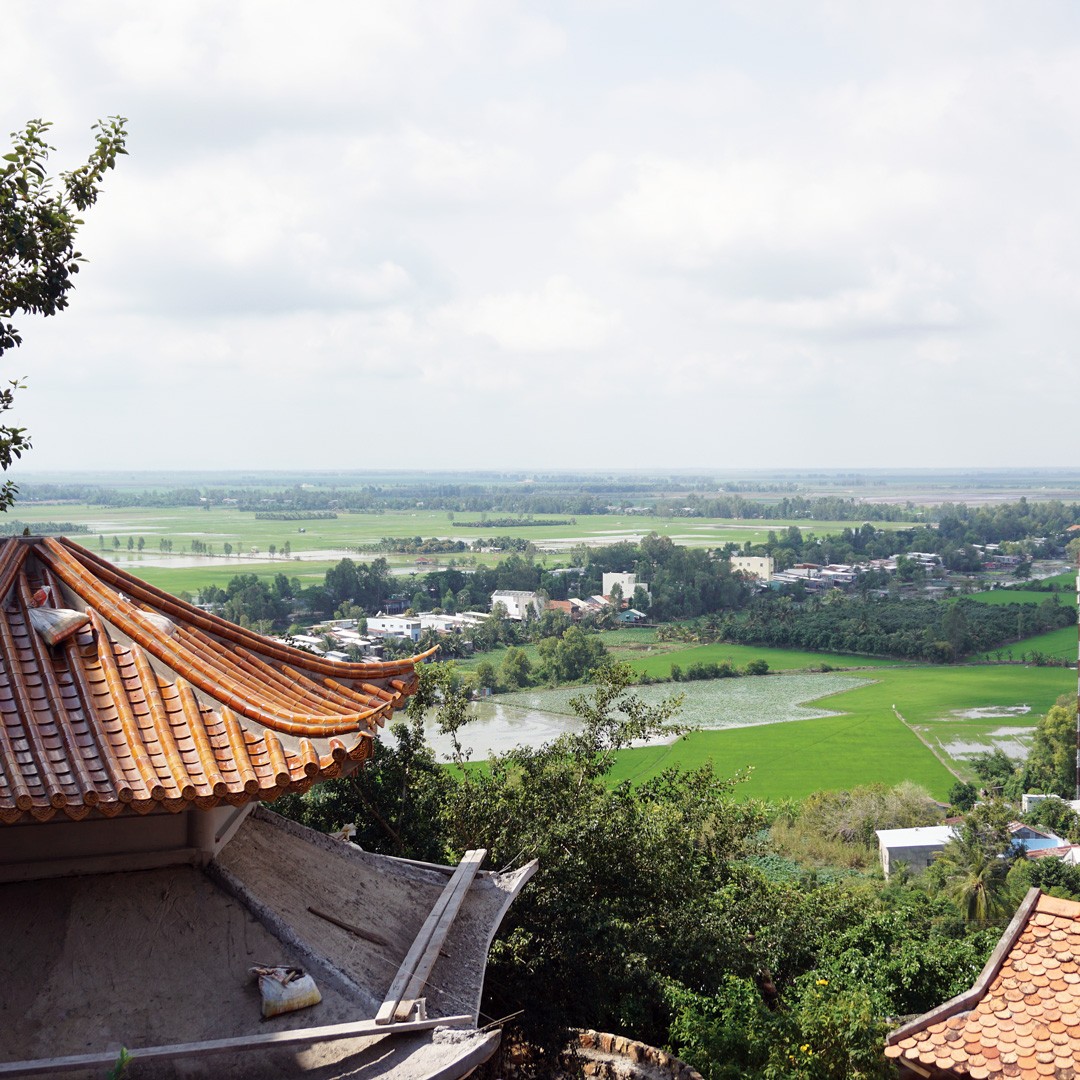
There are many legends surrounding the name "Mount Sam." Some locals believe it is called Sam because the shape of the mountain resembles a conical hat, with the peak facing towards Tinh Bien. Others suggest that in ancient times, the surrounding area was a vast sea, and many types of marine plants, including seaweed, thrived here. Hence, the name "Mount Sam."
The mountain offers a picturesque and somewhat mystical landscape, with lush vegetation creating a beautiful and enticing scene. It serves as an ideal check-in spot for nature enthusiasts, mountain lovers, or those who enjoy hiking and relaxation. Despite the slightly challenging hiking trails, exploring Mount Sam will provide you with a real mountain-climbing experience and the opportunity to capture timeless check-in photos.
4. Tra Su Cajuput Forest
The province of An Giang's Tinh Bien area is home to the Tra Su Bird Sanctuary, also known as the Tra Su Cajuput Forest. While traveling to the West, you simply cannot miss this "extremely hot" woodland because you will appreciate the mangrove forest's vibrant, untamed natural environment, which is home to numerous uncommon plant and animal species. Additionally, visitors can capture stunning check-in pictures in the forest from a variety of extreme virtual life viewpoints.
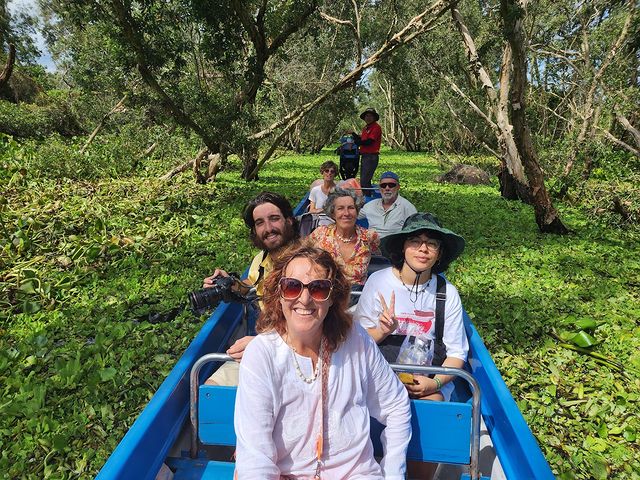
Chau Doc's Tra Su Cajuput woodland is a flooded forest characterized by a brazen, wild quality that is typical of the West. This area, which spans approximately 845 hectares, is densely forested with cajuput and covered in a green duckweed carpet. Furthermore, this is the habitat of numerous endangered plant and animal species, including Anhinga melanogaster and Mycteria leucocephala.
Additionally, visitors can take in the sights of the unique locations here, such as "The Pigeon City" and Kieu Tra Su Bridge. In particular, tourists will get to feel what it's like to ride through the Tra Su cajuput forest in big, enjoyable boats.
5. Chau Doc Floating Village
The floating village of Chau Doc is perhaps the most iconic representation of the charming, distinct cultural essence deeply rooted in the Western region. Every morning at sunrise, the entire village seems to be painted in hues of gold against the early morning sky.
Life swaying atop the water doesn't distance people from each other; instead, it binds everyone closer together, with boats and ferries serving as connections. The people of the Western region are honest and straightforward, sometimes spanning two or three generations of a family closely bonded on a single boat. Though their lives may not be abundant, they live slowly with simple happiness.
6. Cham Minority Village
The Chau Giang Cham Village is a renowned settlement of the Cham ethnic community in An Giang Province, captivating not just due to its ethnic charm but also for the cultural beauty of this extraordinary land. For those eager to explore the culture and people of the Cham community, this is undoubtedly an unmissable destination.
Cham Chau Giang Village stands out for its picturesque scene of wooden stilt houses with unique and peculiar architecture. These stilt houses are usually small, with remarkably distinctive architecture, crafted from precious woods known for their exceptional durability. In front of each house, there's a wooden staircase and a lower entrance suggesting a symbolic gesture; guests entering the house must bow to greet the household and its owner.
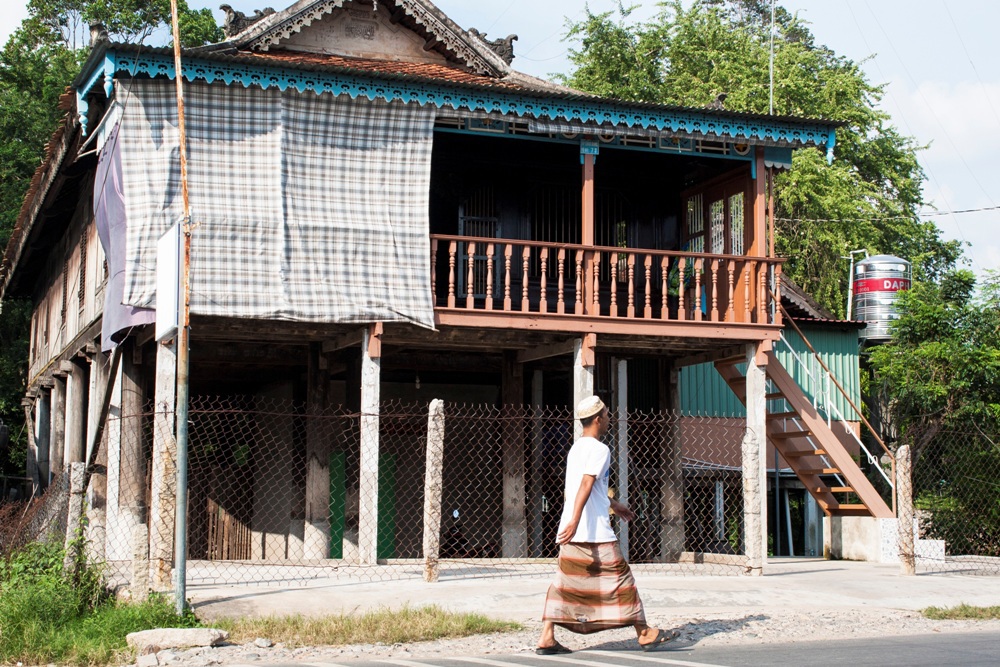
Within this Cham Chau Giang Village, there are around ten stilt houses, several years old, highly treasured. They represent beauty preserved and sustained over an extended period, still existing and protected today. Not only serving tourism purposes, but these houses are also a part of history, a source that helps people understand more about Cham culture and the Cham people.
The majority of the villagers follow the Islamic faith, hence the mosque is a significant symbol of Cham identity. After crossing the Chau Giang Ferry, visitors will explore the Mubarak Mosque, with a history dating back hundreds of years.
It holds immense value, standing out for its rich cultural and religious significance. The mosque boasts unique architecture, a circular tower, and a main gate shaped like an arch. The mosque's roof features a large two-story oval-shaped dome, with the base adorned with a crescent moon and a star, symbolizing the Islamic faith.
7. Cam Mountain
Nui Cam, also known as Thien Cam Son, is situated in An Hao commune, Tinh Bien district, with an altitude of around 710 meters above sea level. It stands majestically, a mountainous area with a uniquely distinctive landscape.
Blessed by nature with a pleasantly cool climate year-round, the entire mountainous region is draped in dense, lush forests stretching as far as the eye can see, interspersed with a myriad of blossoming flowers displaying vibrant colors. You can opt to spend the night and experience a complete evening surrounded by drifting clouds and gentle breezes, immersed in a serene ambiance akin to a utopian realm atop the mountain peak.
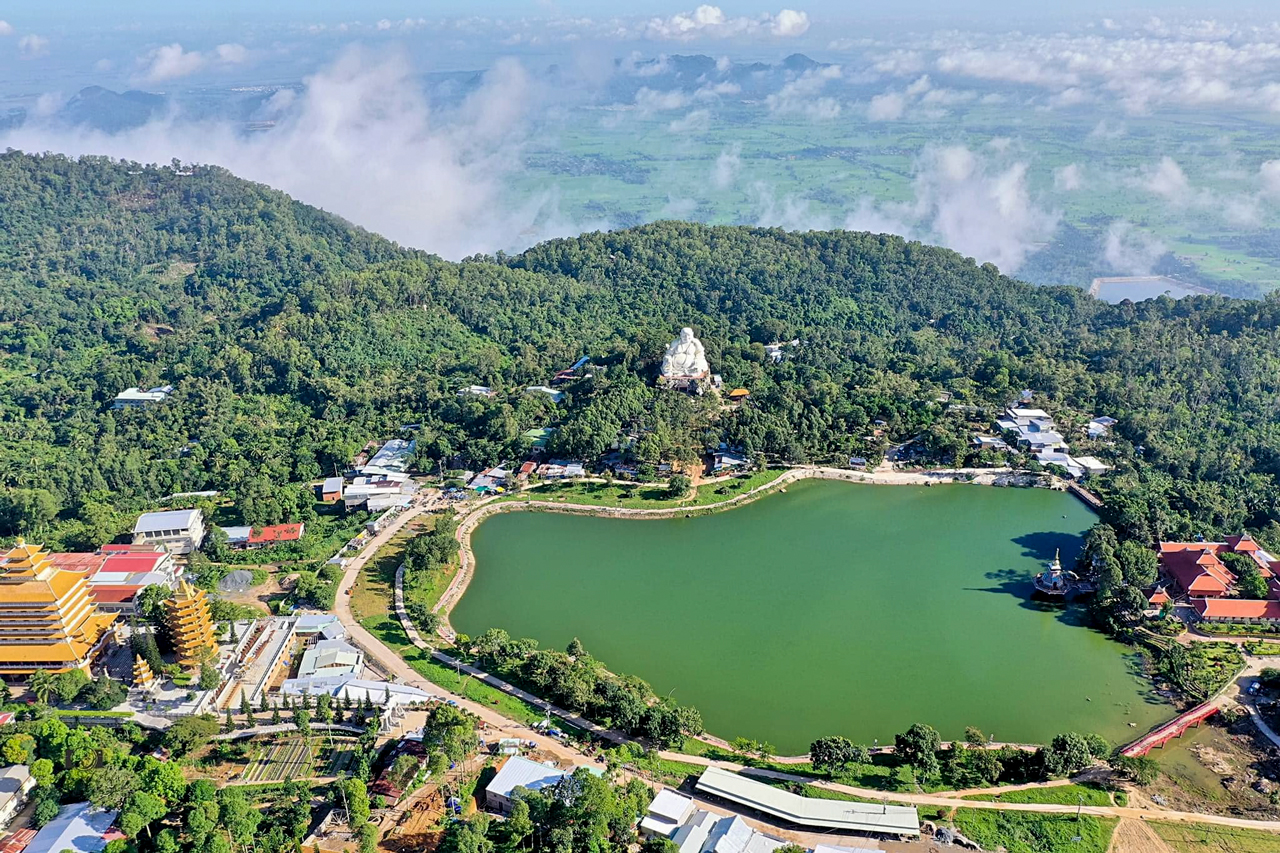
Moreover, this mountain also hosts significant religious architectural structures such as the colossal statue of Buddha Maitreya, the largest in Asia, towering nearly 34 meters high. Additionally, there are temples like Van Linh Temple and Great Buddha Temple present here.
8. Vinh Te Canal
In the realm of Chau Doc tourism specifically, as well as the broader exploration of the Mekong Delta, the Vinh Te Canal stands as a compelling narrative that has captivated travelers since its inception. It continues to hold value that persists to this day, shaping the lives of the riverine communities.
The Vinh Te Canal spans across both An Giang and Kien Giang provinces, running parallel to the Vietnam-Cambodia border, originating from the western bank of the Chau Doc River. Emperor Gia Long ordered its excavation in 1819, a project completed by 1824 under the direct command of the eminent general Nguyen Van Thoai, also known as Thoai Ngoc Hau. This canal measures a total length of 80km, with a width of 30m and an average depth of around 3m.
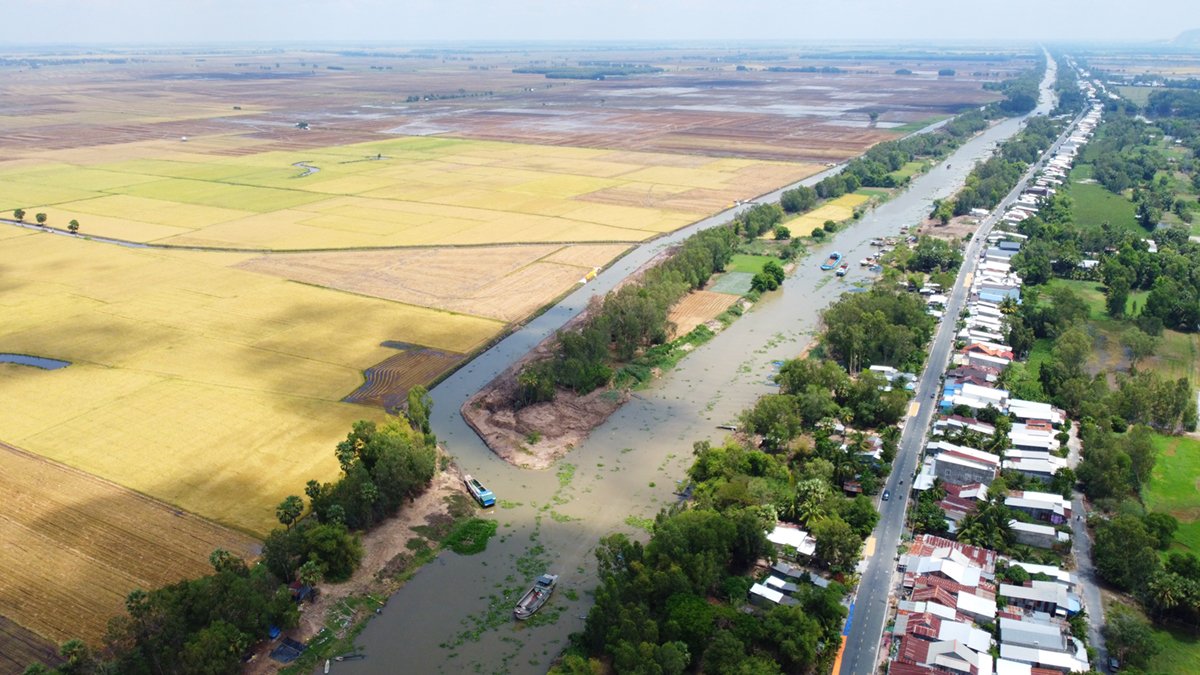
Given its vast scale, the Vinh Te Canal has made substantial contributions to the development of waterway transportation, agricultural systems, trade, and border security in the Mekong Delta region. Even today, the Vinh Te Canal in Chau Doc retains its distinct value, significantly contributing to both waterway transportation and the economic growth of the local riverine population in modern times.
9. Thoai Ngoc Hau Tomb
When you come to Chau Doc, you often get absorbed in its stunning landscapes, temples, and paying respects at the Ba Chua Xu Shrine, sometimes forgetting about other immensely valuable historical sites such as the Thoai Ngoc Hau Mausoleum, located within the cluster of relics at the foot of Sam Mountain in Nui Sam Ward, Chau Doc Town.
The Thoai Ngoc Hau Tomb in Chau Doc, also known as Son Lang, stands as a rare and intact architectural relic from the Nguyen Dynasty era in the Southern region, bearing significant cultural and historical importance.
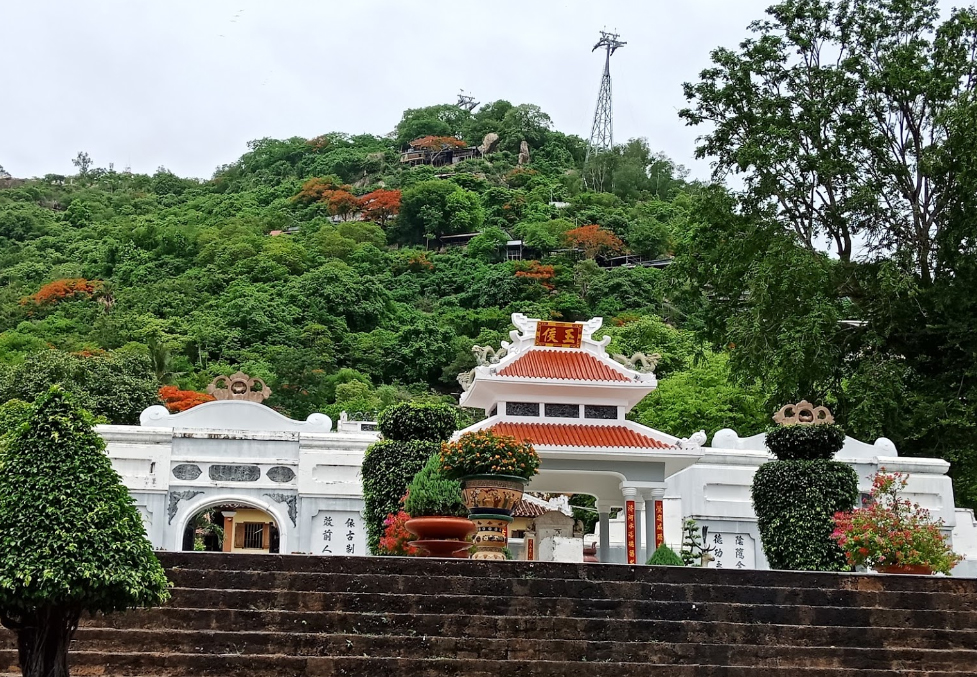
This place always exudes a serene and solemn beauty, filled with a sense of reverence. The mausoleum serves as both a tomb and a temple, dedicated to honoring Nguyen Van Thoai, also known as Thoai Ngoc Hau, an official of the Nguyen Dynasty appointed to explore and govern An Giang. He was also the direct commander of the Vinh Te Canal construction project.
10. Chau Phu Temple
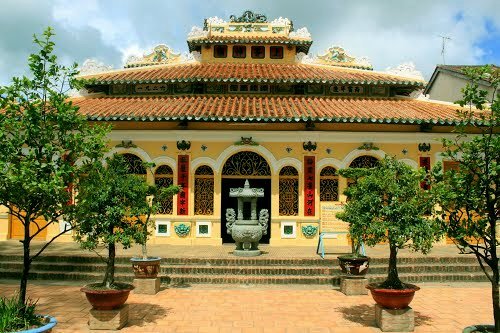
The Chau Phu Temple has a rather unique origin story, closely tied to the Le Cong lineage (also known as Cuu Long Great Family). Initially constructed as an expression of gratitude to the legendary Nguyen Huu Canh, who played a significant role in the expansion of the Southern lands, the Le Cong family rallied the local community, contributing funds and effort to build a thatched wooden shrine (at the location of the former Chau Doc Regional Hospital) to honor him. However, during the French colonial period, the shrine was relocated and rebuilt at its present site to make way for hospital construction.
The Chau Phu Temple holds historical significance and boasts a distinctive architectural charm. The temple was built in the style of three sections and two wings, following the architectural tradition of the Southern region. Its roof features a three-tiered structure adorned with various mythical creatures such as dragons grasping the moon, phoenixes, lions, all showcasing robust and majestic features.
11. Tay An Pagoda
Tay An Pagoda stands as one of the ancient structures you should visit when taking a detour around the magnificent Sam Mountain. Here, you can immerse yourself in the vibrant activities of festive seasons or simply find a serene space to feel the refreshing air, listen to Buddhist chants, and relax your mind.

The ancient Tay An Pagoda is constructed in the distinctive style of temples in the Southwest of Vietnam. Its main structure comprises the central hall, a tower situated on the right, and a blockhouse on the left. From an aerial view, you can behold the entire panorama of the Tay An Pagoda complex. With its unique architecture, harmonious and striking colors, many liken this temple to a phoenix poised to take flight amidst the windy skies of the Western region.
Similar to the Hang Pagoda in Chau Doc, Tay An Pagoda leans against Sam Mountain (rising 284 meters above sea level). Amidst the deep green hues of the mountain and trees, the ancient pagoda adorns a pale yellow hue, its red-tiled roof presenting a colorful illustration. Moreover, the three ancient storeys within the temple grounds boast onion-shaped roofs, adorned with vibrant yet harmoniously balanced colors.
12. Chau Doc Floating Market
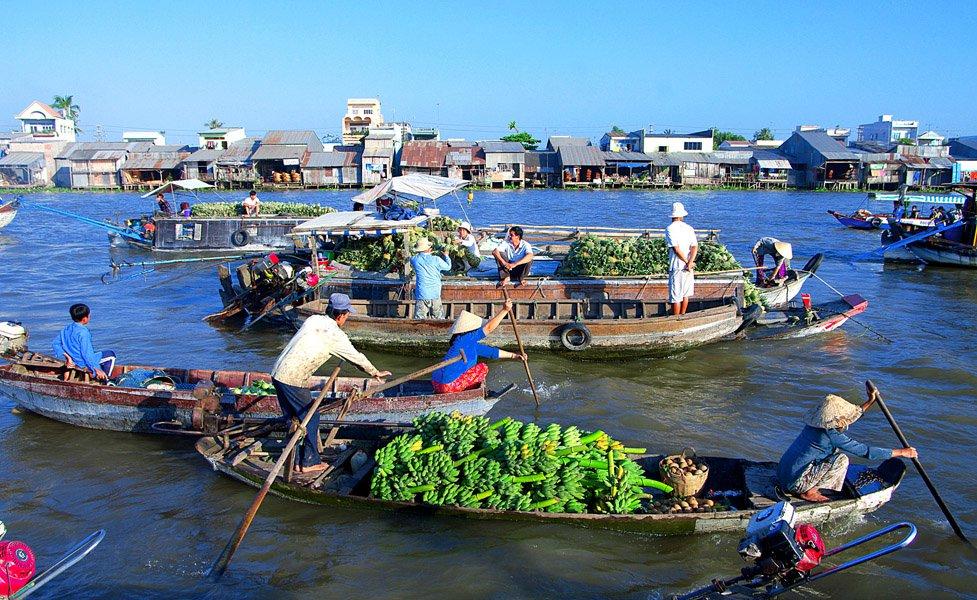
Tours of the Mekong Delta must include a stop at the Chau Doc floating market. That, near the An Giang River, has distinctive antique features. The villagers' way of life is primarily dependent on boats. In this floating market, the majority of exchange and sales activity take place. If you want to visit the market when it's busiest, you have to get up between 6 and 7 am.
Visitors will notice that vendors will offer their goods in a distinctive way, especially when they visit this market. To make items easier for buyers to find, they will hang items they wish to sell from a long pole that is plugged into the river. The Chau Doc Floating Market is well-known for its fresh vegetables of every type and tropical garden fruits including papaya, guava, and mango.
13. Huynh Dao Pagoda
The Huynh Dao Pagoda was constructed in 1996 following Chinese architectural style, featuring a spacious area that draws visitors and Buddhists for sightseeing and worship. Initially, the temple only consisted of the Three Jewels, later expanding to include a bell tower, Quan Am Pavilion, and more, creating the grand complex that exists today.
Covering an expansive area of 3,000 square meters, the Huynh Dao Pagoda showcases over 50 stone Buddha statues, each with distinct postures and expressions. Notably, the statue of Quan Am, in a meditative seated posture, stands over 30 meters tall, adding a sense of solemnity and grandeur to the temple.
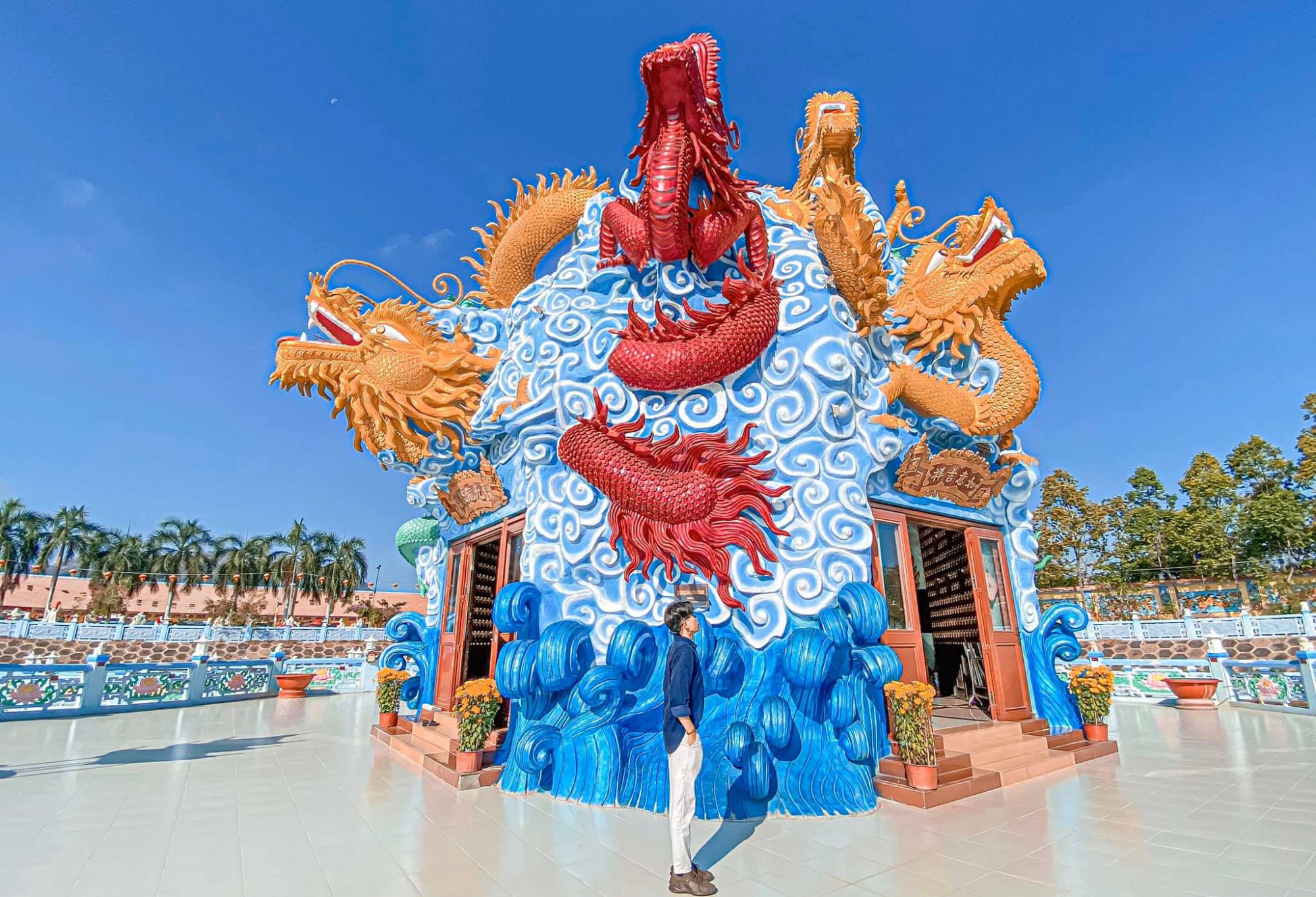
During each Tet holiday, the temple becomes a prominent destination in Chau Doc, attracting numerous Buddhists who come to celebrate Buddha's birthday, visit the temple, and pray for family peace and good fortune.
Furthermore, within the temple compound, there is a vast lotus pond, and above it lies the Water Pavilion adorned with images of nine dragons representing the Mekong Delta region. This spot serves as a "sacred" check-in location, attracting many travel enthusiasts in An Giang seeking a picturesque setting for photo opportunities.
14. Basa Fish monument
As a cluster of uniquely architectured sculptures, the Basa statue sits right in the intersection park of rivers in Chau Doc city. Standing at 14 meters tall, this structure is framed with steel and entirely made of cast concrete, weighing up to 3 tons and enveloped in 1.5mm thick stainless steel. The sculpture cluster doubles as an impressive Chau Doc tourist spot, inaugurated in 2004.
The significance of the statue aims to honor the Basa fish, which holds high economic value for the local community, while also praising the miraculous nurturing of fishermen in particular and the people of the Western region in general. Note that if you plan to explore the Basa fish statue park during the sunny season, the heat typical of the Western region might make you weary, so consider visiting early morning or late afternoon.
15. Mysterious Doctor Nu's Villa
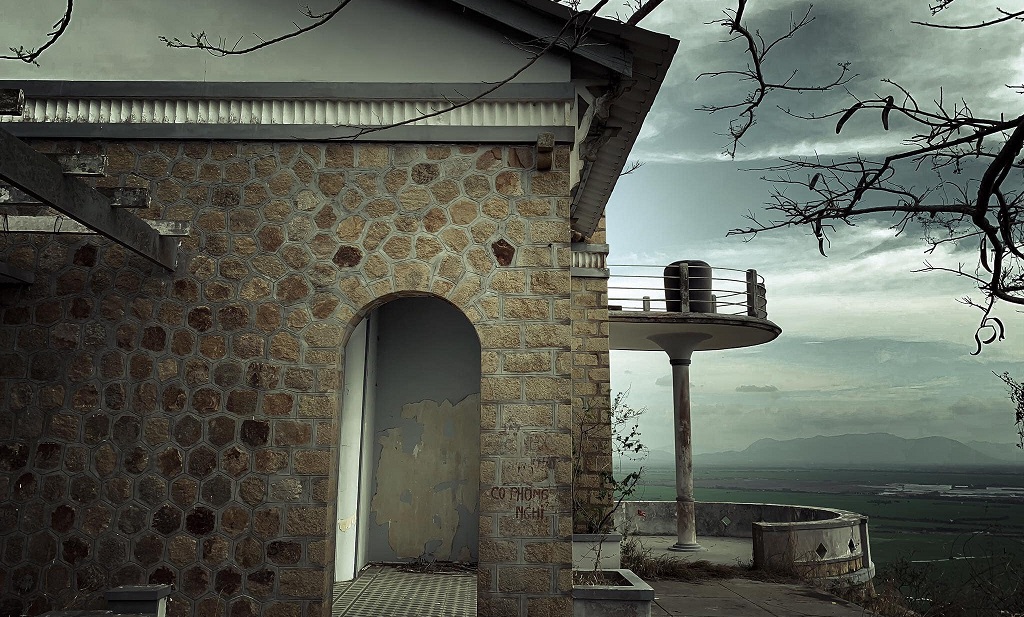
Doctor Nu's villa, situated on the slope of Sam Mountain, was built before 1975. Initially, this place served as a retreat and a place for patients to recuperate. The villa is constructed on a rather unique terrain, allowing it to catch the breeze and sunlight throughout the year while offering panoramic views of the rivers and mountains of the Chau Doc region. It can be said that architects expended considerable effort in selecting this exceptional location.
Due to its abandonment for many years and the emergence of supernatural stories surrounding the villa, Doctor Nu's villa has become a tourist destination in Chau Doc often compared to a "haunted villa," akin to a second Dalat in people's imagination.
With the Top 15 Best Things You Must Do in Chau Doc, have you already picked a place and figured out what you'll be doing? What are you waiting for? Start packing your bags and prepare your essentials carefully to explore these enticing destinations!
